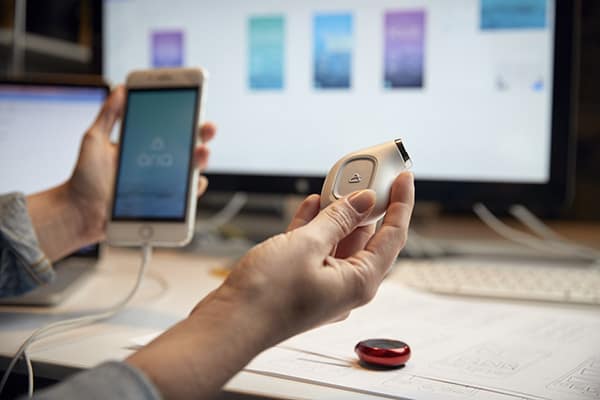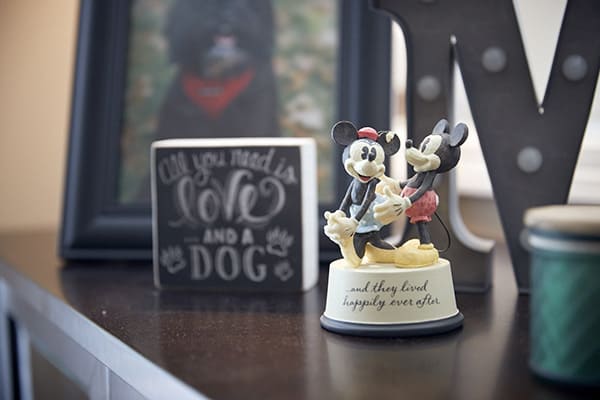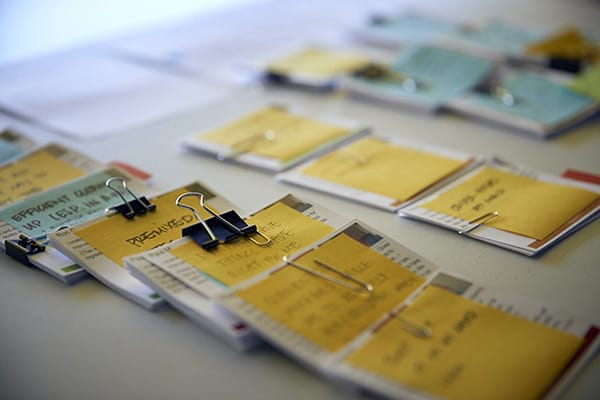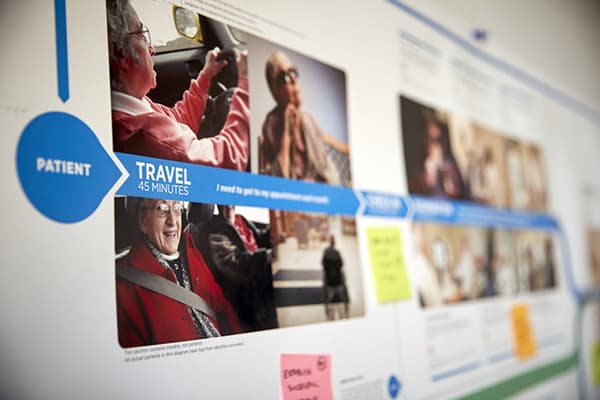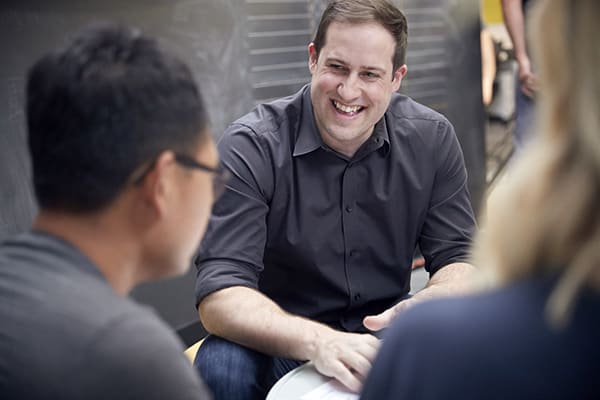When Should I Use a Design Sprint? The art of running – or not – in new product development.
Companies today are incredibly focused on the idea of breakthrough innovation as a leading activity in the relentless search for organic growth. Organizations know they have to create new value for the market and deliver it in a way that creates real meaning for consumers for them to stay relevant — and they want to find it fast. As a result, many have turned to the Design Sprint as their chosen methodology for driving new product and service development.
The design sprint methodology is a structured problem-solving process built on targeting, idea generation, prototyping, iteration, and user testing. It is an effective way to arrive at viable solutions that meet consumer needs in the least amount of time. Sounds great – right? Well not so fast. We see many clients assume that a design sprint is a one-size-fits-all methodology, especially when considering the need for speed. Nomenclature is partly to blame, or its visibility as the methodology-du-jour, but today it has become top of mind, and more dangerously, synonymous with getting a lot of work done in a short period of time. Taking that already delayed six-week project with a looming deadline and stuffing it into a two week period hoping to realize the same outcomes by declaring it a ‘sprint’ is not necessarily a great answer.
What Is A Design Sprint?
Design sprints grew from a vision to grow a strong User Experience (UX) culture and practice at Google Ventures and are similar to the sprints used in an Agile Development Cycle typically seen in digital development. The big idea with the Google Ventures design sprint is to ideate, build and test a prototype in just five days. The process aims to help teams to clearly define goals, validate assumptions and decide on a preliminary product roadmap before starting actual development. It’s a way of rapidly stepping into your future with the intent of seeing how your customers react to a particular concept in an attempt to get your best ideas to market faster.
So Why Is This Potentially Problematic For Physical Product Development?
Design Sprints and Agile Development have certainly taken over the software industry where the traditional waterfall method has been deemed to be less effective in the wake of so many unknowns facing a team at the beginning of a project. But can it work for physical products with mechanical and electronic components?
Realizing the power of product design sprint process in physical product design is certainly more challenging than in the digital space. When developing apps, for example, you can gain a lot of relevant feedback quickly through rapid iterations and prototyping, making incremental improvements easily. In physical product design, however, it inherently takes more time to iterate, build a prototype and validate with potential customers and end-users and requires more upfront thinking. It can be hard creating products in a new category, with a new consumer, and in new channels. So you’ll be moving fast, in a given direction. But will you be making true progress?
Moving fast won’t get you to the finish line if you’re running in the wrong direction. Sometimes you might not be ready to start sprinting yet, or worse yet, it might be in an opposite direction, leaving you tired and further from the finish line than when you started. In fact, using the product design sprint process might not be the best methodology for your project at all.
WALK BEFORE YOU RUN
It makes sense that the first phase of design sprint planning is all about understanding the problem space — fleshing out customer needs and value propositions and mapping the user story. This information is the foundation of any sprint; it provides the consumer insight needed to decide the best place to focus your efforts and develop a relevant solution to the customer problem you’re working to solve. However, if you don’t have enough data or user research to build that understanding, then jumping into a design sprint might be a little premature. It’s not catastrophic; it just means you need to invest some time to learn more about your customer first.
At THRIVE, we don’t think that building a solid foundation is something you always want to sprint through. To design something precious to a consumer, genuinely groundbreaking, you need to get to know them. What motivates them? What are their likes and dislikes? What factors impact their behaviors (environment, culture, and lifestyle)? Finding the answers to these questions can unlock the deep insight needed to create something genuinely innovative. A robust understanding of your consumer allows you to leapfrog beyond how your competitors view them and develop products and services that speak to users in not only a functional way but in a way that resonates emotionally and has the potential to deliver deep meaning.
This means spending some quality time with your customers and end-users — observing, shadowing, conducting interviews – doing design research. Note however that this is different from market research, which many companies tend to rely on solely. Market research looks at people according to their preferences (likes, dislikes, purchasing habits). It’s based on consumption data, and as a result is a hindsight, focused on capitalizing on users’ existing behavior around the existing paradigms of product use. The result is incremental thinking — a stealing share mentality — that it is hard to use for evolutionary thinking, let alone revolutionary.
Design research alternatively seeks to understand the why behind the behavior. By getting to the foundation of who your customer is as a person and why they do what they do, you’ll start to view their problems in a different, deeper light, one that causes you to reexamine existing conventions and challenge the status quo. This is the kind of information that helps you generate genuinely innovative solutions, the kind where customers’ think “you get me.” Bonus: having that insight will help you focus your design sprint in the direction that addresses a real user need.
Think of it as training. You wouldn’t, or probably should not expect to perform well in a 100-meter sprint if you haven’t done any preparations beforehand — worked on strengthening your muscles and conditioning your body, got new spikes, even surveyed the track (Is it synthetic? Asphalt? Dirt?). It can all impact your run, so you shouldn’t expect to perform well in a design sprint without having the right foundation of research beforehand, either.
ENVISION THE FINISH LINE
There’s an organizational struggle we sometimes face with companies who don’t traditionally embrace design research and think the time spent investing in it is time “standing still.” We get it. When the ultimate goal is a new product, it can be hard to understand how a stack of paper will help you get there, and it’s even harder with the fear that your competition has already started jogging. So that’s why companies jump into design sprints. They presume design sprints are a quick way to get to a tangible output without having to invest much time and effort in research, so they fire the starting pistol and send their team off to the races, chasing a finish line without even identifying a definite problem, let alone arming themselves with the information to design anything meaningful to consumers. They might start exploring dozens of different concepts, only to later have them all invalidated in user testing for example — something that could have been avoided by slowing down to learn about the customer first. In short, they start running without any idea where they’re going, neglecting any design sprint planning and chasing their competitors down all the same wrong turns that they’re making. Talk about wasting time.
To us at THRIVE — design research is forward movement — its good design sprint planning. It’s about learning about the customer and how it ultimately brings us one step closer to a successful innovative solution because it changes the direction from vague business goals (“How do we come up with the next billion-dollar idea?”) to focused consumer oriented ones (“How might deliver a solution that fits within the consumers life?”). We find that if we solve the right consumer-oriented goals, the business ones fall into line right behind them.
We view design strategy as one of our most essential deliverables, despite the fact you can’t touch it. We use research to fuel a roadmap that looks at every opportunity holistically, providing our clients with a picture of a range of possible futures. Moreover, since we’re a design consultancy and not just a research firm, we frame research as actionable insights that directly drive new product and service development. In short, we envision the future for our clients, transforming information into tangible examples of how brands can better connect with their consumers in time.
TRUST YOUR COACH
“Be Quick, but don’t hurry” – John Wooden
Before you say, “This all sounds great, but I don’t have time for this,” we are not saying that the only right way to do things is going slowly; what we’re saying is by being thoughtful in the beginning, we can move quickly and efficiently and avoid making costly mistakes by rushing and hurrying later on when the stakes are so much higher.
At THRIVE, we’re professionals at understanding the constraints of budget and time, and we know why you feel like a design sprint is your only option, but we also know there are a lot of different methodologies for creating new products and services, and that a design sprint isn’t always the best one. Moreover, if it is to be a design sprint, let us help you make sure you have the right foundation, that block of training (research and insight), so you can go on the “B” of the bang of the gun, accelerating quickly in the right direction. We know the clock is ticking, the race has started, and your competition is already running, but we’ve also run enough of these races to understand how to put together a program for you that will ensure that you’ll win the race in the end.
So, before you jump off the starting block, have your eyes open to what you don’t know, and understand that sprinting isn’t always the right method for the problem at hand. Then, let us help you craft how to proceed. If you tell us your goals and timeline, we promise we’ll help you get there.



